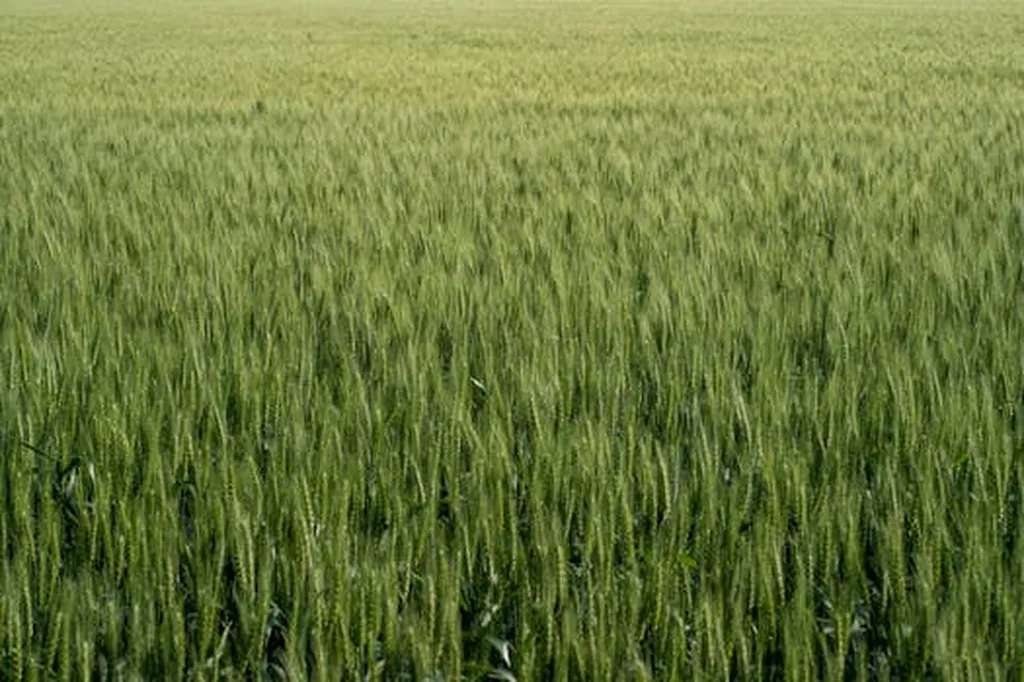In the face of climate change, understanding how cereal crops respond to stress is more critical than ever. A recent study published in *Agronomy* has shed light on the physiological responses of wheat and barley to drought and nitrogen stress, offering insights that could revolutionize crop management and breeding programs. Led by Kenny Paul from the Department of Agricultural Sciences at BOKU University Vienna, the research utilized advanced hyperspectral imaging to uncover evapotranspiration and respiration patterns in cereal crops under stress.
The study focused on two wheat cultivars, Videodur (DU) and Sensas (SW), and two barley cultivars, Tiroler Imperial (SG1) and Amidala (SG2), during the early reproductive to full maturity stages (BBCH 70 to 90). By employing infrared (IR) and visible near-infrared–shortwave infrared (VNIR-SWIR) hyperspectral imaging, the researchers analyzed evapotranspiration (ET) and respiration as functions of mean plant temperature (Tplant), light intensity, plant water status (indicated by the Normalized Difference Water Index, NDWI), and air humidity.
The findings revealed that drought stress significantly reduced NDWI and ET while increasing Tplant. Wheat cultivars showed greater sensitivity to water deficit compared to barley. “Barley, particularly the Amidala cultivar, exhibited superior water retention and thermal regulation,” noted Paul. “This highlights its potential for drought resilience, with consistently higher NDWI values and lower Tplant.”
The temporal analysis identified the reproductive stage as the most vulnerable to stress, with a sharp decline in NDWI and a rise in Tplant. This emphasizes the need for stage-specific interventions to mitigate the impacts of environmental stress on crop yields.
Regression models developed in the study explained 74% of ET variance and 67% of respiration variance, underscoring the predictive power of NDWI and Tplant as proxies for plant water status and metabolic activity. Real-time ET measurements using a balance during precision watering further validated these findings.
The commercial implications of this research are substantial. By understanding the specific physiological responses of different cereal cultivars to stress, farmers and breeders can develop more targeted and effective management strategies. This could lead to improved crop resilience, higher yields, and more sustainable agricultural practices.
As Kenny Paul explains, “These findings provide valuable insights into growth stage-specific breeding programs and sustainable crop management strategies under environmental stress conditions.” The ability to predict and mitigate the impacts of drought and nitrogen stress could be a game-changer for the agriculture sector, particularly in regions prone to water scarcity and erratic weather patterns.
The research published in *Agronomy* not only advances our scientific understanding of cereal crop physiology but also paves the way for innovative solutions that can enhance agricultural productivity and sustainability. As the global population continues to grow, the need for resilient and high-yielding crops has never been greater. This study offers a promising path forward, one that could help secure food supplies and support farmers in the face of a changing climate.

